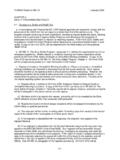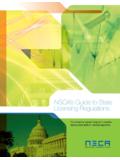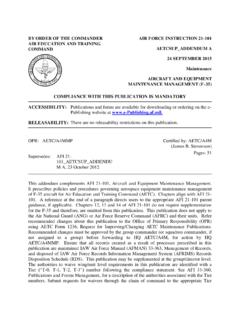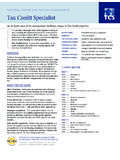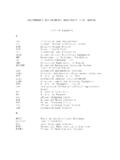Transcription of Headquarters National Guard Regulation 385-10 …
1 Headquarters National Guard Regulation 385-10 Department of the Army Washington, DC 20310-2500 Effective: Safety Army National Guard Safety and Occupational Health Program _____ Summary. This Regulation incorporates the provisions of AR 385-10 , AR 385-40, AR 385-64, DA Pam 385-64 and integrates the OSHA requirements into the ARNG Safety and Occupational Health Program. Impact on Unit Manning System. This Regulation does not contain information that affects the New Manning System. Applicability. This Regulation applies to the Army National Guard (ARNG). For the purpose of this Regulation , each State Adjutant General is an installation commander. The term State includes the Territories and the District of Columbia. Supplementation. States are authorized to supplement contents of this Regulation , except statutory and DOD-directed requirements.
2 Supplements will not be less stringent than regulatory requirements contained herein. If supplements are issued, States will furnish a copy to NGB-AVN-S. Interim changes. Interim changes to this Regulation are not official unless they are authenticated by the Executive, NGB. Users will destroy interim changes on their expiration dates, unless sooner superseded or rescinded. Suggested improvements. The proponent agency for this Regulation is the National Guard Bureau. Users are invited to send comments and suggested improvements on DA Form 2028 (Recommended Changes to Publications and Blank Forms) directly to NGB-AVN-S, Arlington Hall Readiness Center, 111 South George Mason Drive, Arlington, VA 22204. Internal control systems. This Regulation is subject to the requirements of AR 11-2. It contains internal control provisions and a checklist for conducting internal control reviews has been published under a separate cover.
3 _____ Contents Paragraph Chapter 1 General Purpose. 1-1 References. 1-2 Explanation of Abbreviations. 1-3 Responsibilities. 1-4 Chapter 2 ARNG Safety Program Structure and Activities Organizational Structure. 2-1 Operational Procedures. 2-2 Safety Councils. 2-3 _____ * This Regulation supersedes NGR 385-10 dated 21 October 1988. Contents Paragraph Chapter 3 Safety Training General. 3-1 Specialized Safety and Occupational Training. 3-2 ARNG Safety and Occupational Health Manager, Safety Specialist and Occupational Health Nurse Certification Requirements. 3-3 Industrial Hygiene Training. 3-4 Approved Professional Development Organizations. 3-5 Chapter 4 Army National Guard Aviation and Ground Accident Reporting, Investigating, and Recordkeeping Purpose. 4-1 Reportable Accidents. 4-2 Pre-accident Notification Plans. 4-3 Appointing Accident Investigation Boards.
4 4-4 Accident Investigation Report Administration. 4-5 Investigation and Reporting of Special Cases. 4-6 Accidents Involving more than one Command. 4-7 Accident Reports and Recordkeeping. 4-8 Safeguarding Accident Information. 4-9 Release of Information from Accident Investigation Reports. 4-10 Chapter 5 Federal Employees Compensation Act (FECA) General. 5-1 Federal Employees Compensation Act (FECA). 5-2 Technician Injury and Illness 5-3 Reporting and Recordkeeping Procedures. 5-4 Responsibilities. 5-5 Chapter 6 ARNG Occupational Health Program General. 6-1 Objectives. 6-2 Responsibilities. 6-3 ARNG Occupational Health Program Elements. 6-4 Industrial Hygiene. 6-5 Workplace Medical Walk Through Inspections. 6-6 Hearing Conservation Program (HCP) 6-7 Respiratory Protection Program (RPP). 6-8 Vision Conservation and Eye Safety Program. 6-9 Radiation Protection Program (RadPP) 6-10 Reproductive Health Program.
5 6-11 Epidemiological Investigations. 6-12 Immunization program for FTS Employees. 6-13 Illness/absence Monitoring. 6-14 Occupational Health Counseling Program. 6-15 Health promotion and Wellness Program. 6-16 Medical Surveillance. 6-17 OSHA Mandated Programs. 6-18 Recordkeeping. 6-19 Chapter 7 Hazard Communication Program (HCP) General. 7-1 Purpose. 7-2 Application and Scope. 7-3 Responsibilities. 7-4 Documentation of HCS Training. 7-5 Employee Information and Training. 7-6 Guidelines for the State ARNG Installation HCP. 7-7 Guidelines for New Employee Training. 7-8 ARNG Hazardous Material Information System (HMIS) on CD-ROM. 7-9 Chapter 8 The ARNG Risk Management Program Risk Management Program. 8-1 Risk Management Definition. 8-2 Purpose. 8-3 Responsibilities. 8-4 Objectives. 8-5 Program Elements. 8-6 The Risk Management Process.
6 8-7 Risk Management Program Development. 8-8 Chapter 9 Army National Guard Aviation Accident Prevention Purpose. 9-1 Accident Prevention Guidance. 9-2 Implementation. 9-3 Duties and Responsibilities. 9-4 Consolidation of Safety Functions for J, L, and M series TOE Units. 9-5 Fig. 9-1, Quarterly Aviation Safety Meeting Report sample Fig. 9-2, Safety Council Meeting Minutes Sample Fig. 9-3, Recommended Publications for the Unit Safety Library Chapter 10 Promotional and Educational Materials. General. 10-1 Procurement. 10-2 Budgeting and Funding. 10-3 Management. 10-4 Chapter 11 Accident Prevention Awards Program Purpose. 11-1 Policy. 11-2 Awards presented by Headquarters , Department of the Army. 11-3 Awards presented by Chief, NGB. 11-4 Awards authorized to be presented by States and their Subordinate Elements. 11-5 National Safety Council Awards.
7 11-6 Army Aviation Accident Prevention Unit Awards. 11-7 Broken Wing Aviation Safety Award. 11-8 Chapter 12 Ammunition and Explosives Safety General. 12-1 Responsibilities. 12-2 Army National Guard Safety Committee. 12-3 Quantity distance standards. 12-4 Site plans and licensing. 12-5 Waivers. 12-6 Chapter 13 Firing Ranges General. 13-1 Responsibilities. 13-2 Applicability. 13-3 Waivers. 13-4 Inspections. 13-5 Ammunition Issue. 13-6 Indoor Firing Ranges. 13-7 Chapter 14 Industrial Hygiene General. 14-1 Workplace monitoring. 14-2 Workplace evaluations. 14-3 Annual evaluations. 14-4 Regional Industrial Hygiene concept. 14-5 Regional Industrial Hygiene Support Areas. 14-6 Regional Industrial Hygiene support. 14-7 Chapter 15 Ground Safety Programs General. 15-1 Scope. 15-2 Program Elements. 15-3 Chapter 16 Workplace Inspections Annual workplace Inspections.
8 16-1 Hazard Abatement. 16-2 Chapter 17 Airborne/Other Special Purpose INFIL/EXFIL Techniques Accident Prevention Program (AAPP) Purpose. 17-1 Background. 17-2 AAPP Survey Administration. 17-3 Duties and Responsibilities. 17-4 APPENDIXES ARNG State Safety and Occupational Health Manager and Safety Specialist Certification A ARNG State Occupational Health Nurse Certification B State Safety and Occupational Health Program Evaluation Checklist C Explanation of Terms, Classifications, Rates, Types of ARNG Accidents,and Glossary D Recommended Equipment List E References F Chapter 1 General 1-1. Purpose. This Regulation establishes the Army National Guard (ARNG) Safety and Occupational Health Program. It supplements directives in AR 385-10 and provides guidelines necessary for planning, organizing, coordinating and implementing State ARNG Safety and Occupational Health (SOH) Programs and recognizes Safety as an integral component of all ARNG training and operations.
9 Goals of SOH programs are: a. Identify problems and provide corrective actions/countermeasures within work and training environments ensuring active compliance with State and Federal safety guidelines/regulatory requirements. b. Promote safe and healthful practices for all ARNG personnel and activities including support of State civilian authorities and public safety programs. c. Provides responsibilities, policies, and duties for the integration of safety risk management into existing command processes. 1-2. References. References for this Regulation are listed in Appendix F. 1-3. Explanation of Abbreviations. Abbreviations used in this Regulation are located in the glossary, Appendix D. 1-4. Responsibilities. a. Chief, National Guard Bureau (NGB-ZA) is responsibile for establishing the ARNG Safety and Occupational Health Program. This responsibility includes ensuring compliance with AR 385-10 , the Occupational Safety and Health Act of 1970 (PL 91-596), and coordination with other HQDA staff agencies and The State Adjutant s General on workplace accident and occupational illness prevention.
10 Authority over the program is delegated to the Director, ARNG. b. The Director, ARNG: (1) Receives reports and updates from the ARNG Safety and Occupational Health Council Chairperson and briefs program shortcomings, resolution of funding and staffing shortages to the Chief, NGB. (2) Requires safety and occupational health integration into all NGB disciplines. (3) Requires National Guard Bureau (NGB) Directorates to utilize local controls and program assessments for evaluating directorate statutory and regulatory compliance. NGB-AVN-S and NGB-IG will conduct random independent program audits to insure effective compliance. (4) Serves as the approving authority for all Class A aviation and ground accidents, and class B aviation accidents. c. Deputy Director, Aviation and Safety (NGB-AVN). The Deputy Director has staff responsibility for supervision and implementation of Safety and Occupational Health programs through the Aviation Operations and Training Division, Aviation Systems Division, Aviation Safety and Occupational Health Division and Multimedia Media Branch.
